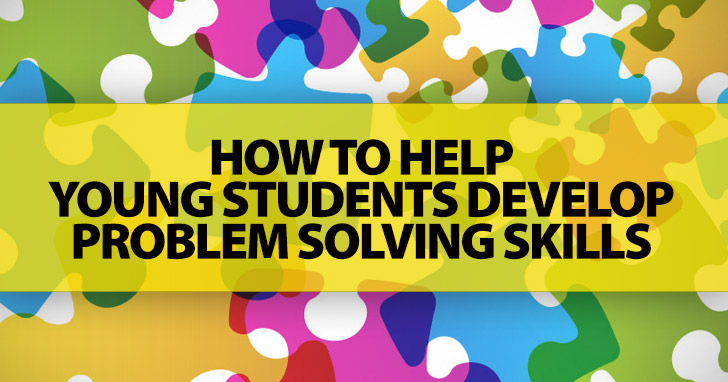6 Great Techniques to Discuss Issues with Parents


The majority of children’s lessons focus on memorization, like colors, alphabet, or addition and subtraction. Cognitive abilities, being able to draw conclusions and problem solve can be learned at the same time without interfering with the memorization. Since most issues cannot be solved by memorizing the right answer but through analysis, getting children accustomed to reaching their own conclusions will better prepare them for the future.
Children can start learning to think about their surroundings from an early age, even as they begin to learn colors and numbers. Of course kids need to start small. Games like Where’s Waldo can help children focus on paying attention to details based on simple instructions. The child knows from the title of the book that the point is to find Waldo on every page. Sometimes it is easy, but not always. As the child progresses through the book, it becomes easier to figure out where Waldo is hiding based on where he has been found on previous pages. This type of activity progresses beyond simple instructions where the child is told where to look through a series of instructions.
As a child’s brain develops, it is important to push to expand how they see issues and the best ways to solve them. Simple problem solving can be a book that presents a problem in the beginning then has the child look for a clue. Naturally the issue with books is that it is easy to turn the page to get the answer without having to spend much or any time thinking. This is why it is important to have them start playing games.

Repetition is one of the best ways to learn. There are numerous books that can help, from Where’s Waldo to I Spy, children are given a single focus. Then over the course of the book they are given different situations with the same objective: find the object. As they progress through the book they pick up new cues and hints to help them later.
It can be very difficult when watching a child struggle through an issue not to simply point them to the answer. However, this teaches the child to rely on someone else. It is perfectly acceptable to provide hints in the beginning to help the child understand the problem and the solution.
As the child repeats a similar problem in different situations, that child will be able to more quickly identify the solution. Having a gauge to help children see progress gives them additional challenge to shoot for: can you beat your best time?
After a child has successfully completed several problems take some time to find out how the child figured it out. Every so often have the child talk through the problem solving process. It is ok to speak up and challenge a child’s thinking to see if he or she can find a better way to do something.
Children thrive on positive feedback. Problem solving is a particularly difficult skill to develop, so make sure to provide positive feedback. However, it is also important to help students learn a better or more efficient way to do things. Make sure to keep the critique positive, that way the child will know he or she is doing well, you are just trying to get them to come up with another way to solve the problem.

Real life seldom has a problem with one simple step to solve it. Usually adults have to deal with a series of issues in order to troubleshoot something. By the time a child reaches the second or third grade it is time to start pushing the way they think. The main problem should be easy to understand, but it should be more difficult to find a way to solve the problem.
An example of a more advanced problem solving games is “Old Green Room Escape.” The main object is obvious, the player must find a way out of the room. Throughout the room there are little hints and clues for the child to start solving how to get out. The way to make an escape is to “look” around the room. There are certain points on screen that can be touched for closer inspection. When these areas are touched, the game zooms in on the object or puzzle and allows the child to explore.
Advanced problem solving games should be like obstacle courses for the mind. The point is to reach the end after executing several different tasks.
Problem solving can be frustrating. For every difficult problem, make sure to include something that is easier to complete.
For example “Old Green Room Escape” has some puzzles that are as simple as clicking on an object and zooming in on it. Opening doors or drawers are simple. However, the game also has some less obvious puzzles, like a door that opens based on a color scheme the player finds somewhere else in the room. The game provides a mix of easy and difficult challenges so that the player can get a quick sense of accomplishment between more difficult tasks.
Trial and error is how everyone learns. If a child decides to do all of the easy parts of a puzzle first, then is stumped by all of the difficult parts, that child will learn to about pacing. Children have to learn to break a multi-step problem into pieces they can handle.
In addition to solving the overall problem, you can time how long it takes to solve the problem. You can time each of the smaller puzzles so that the child can see how much they have improved and where they still need work. You can even turn it into a competition, like a scavenger hunt, so that children can see how they measure up to others in the class. If it is a competition, make sure that it stays on friendly terms by giving out prizes or treats to all participants.